Japanese Knife
How Japanese Professionals Take Care of Their Knives – step by step Q&A
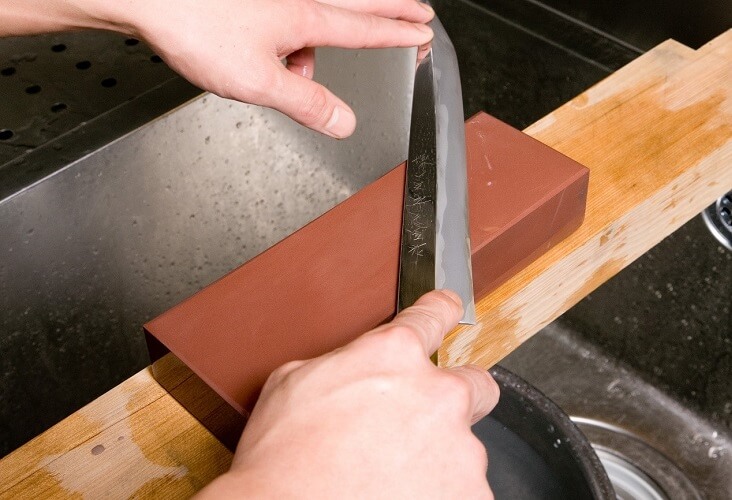
In this post, I will introduce frequently asked questions (FAQ) about how to care your knife. Also, I will introduce tips on how Japanese professionals take care of their knives.
(Image: buono-web.jp)
- How often should I sharpen the knife?
If you’re a professional chef or an avid home cook and you own a very delicate knife, it’s probably best to take care of your knife every day, but otherwise you only need to do it once a month or two (tip: It takes a lot longer to sharpen a knife that’s been left uncared for a month than to take care of a knife that’s been sharpened daily, so even if you’re not a professional but don’t want to spend hours at the end of the month, then sharpening it every day for 5 minutes is a good idea)
- How do I know when to sharpen my knife?
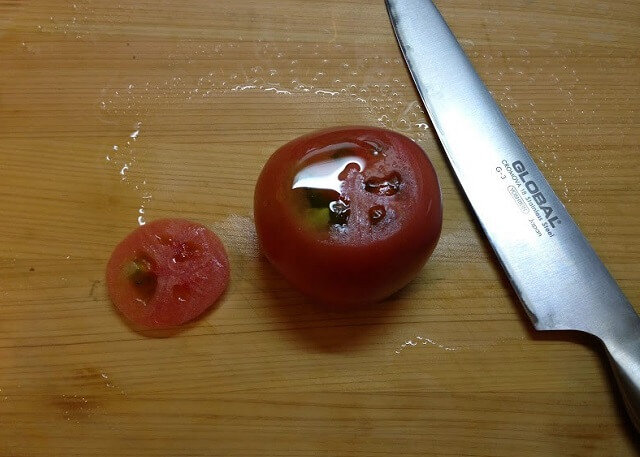
(Image: org.revilog.com)
If a newly purchased knife is at 10, it’s better to start sharpening when you think it’s at 9 or 8. The easiest way to check whether your knife needs sharpening or not is to cut a tomato. If you feel like the knife doesn’t cut in smoothly, then it’s about time. Don’t finish the tomato yet, you’ll be needing it later on!
- How do I choose my whetstone?
Here’s a list of major types of whetstones and how you should be choosing them:
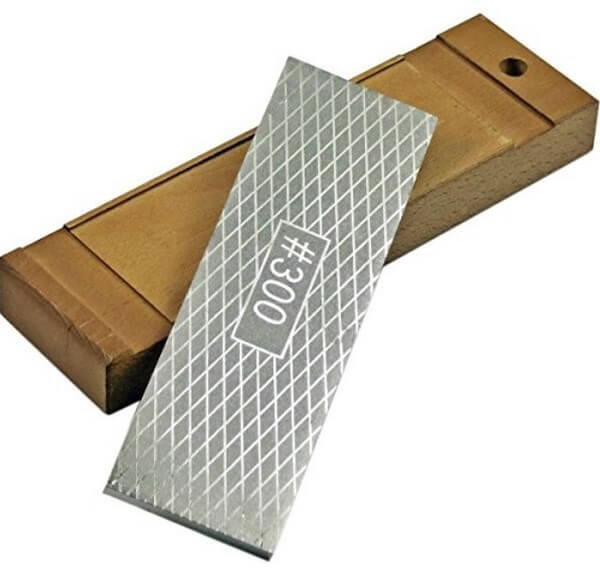
(Image: my-best.com)
-Rough whetstone (Grit size: No. 80~ 400)
– This is for when you want to fix the chipped edge or want to change the shape of the blade drastically. Unless there’s a major chip on the blade, you should avoid using it.
-Medium whetstone (Grit size: No. 600~2000)
– Most commonly used for knife sharpening. If you’re using a normal kitchen knife and don’t intend on becoming a professional, this is probably the only whetstone you need. But there are invisible scratches so if you’re someone who has less to none unwanted friction when you cut in, you probably need an additional whetstone.
-Finishing whetstone (Grit size: No. 3000~6000)
–Used to take away the small scratched made after sharpening the knife on the medium whetstone. Also used to increase the durability by smoothing out the edge of the blade to prevent it from chipping.
- Can I use my water stone as it is?
Before you start using the whetstone, there are two things you need to do.
First, place the whetstone in a bucket or a bowl full of water so it covers the whole stone. Leave it for about 10~20 minutes. It will start emitting bubbles. Wait until the stone is completely out of bubbles, and take it out of the water (do not use hot water, the stone will crack!)
Secondly, if the surface of the whetstone does not look flat, use a surface repairing whetstone and get rid of any bumps or dents.
If you’re done, place the whetstone on a wet towel.
- How do I hold the knife against the whetstone?
Hold the handle with your dominant hand, and place your index finger on the back of the knife. The knife should be 45 degrees to your body (it’s important that you don’t change this angle until you finish sharpening your knife).
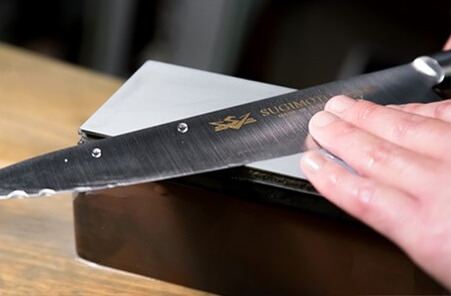
(Image: sugimoto-hamono.com)
Place your index, middle, and ring fingers of your open hand on the surface of the knife. Do not completely lay the knife on the whetstone, but slightly lift it from the surface.

- Which part of the whetstone do I use?
Use the whetstone as thoroughly as possible. If you keep using one part of the whetstone, the dents would start forming and this would make an equal sharpening of the knife impossible.
- How do I sharpen?
Divide the blade of the knife into three sections, and start sharpening from the tip. Without changing the said posture, slide the knife on the surface of the whetstone. Put more pressure when you’re pushing rather than when you’re pulling it back words. You don’t need to wash the whetstone when it starts producing black liquid, but keep adding water on the surface so it won’t dry up.
If it’s single-edged, you only need to sharpen one surface and the other side only needs a little bit of brush up, but if you’re using double-edged knife, sharpen both side equally.
- It won’t sharpen, what am I doing wrong?
Nothing, it just takes some time! Especially if you haven’t sharpened your knife for a couple months, it takes about 30~40 minutes for a knife to get sharp enough.
Or it could be that you’re using a wrong whetstone. It’s not necessarily because of the whetstone, because the knife will gradually sharpen even if you’re using an un-matching ones, but it takes longer for the knife to get sharpened if your whetstone is too hard or too soft for your knife.
- How do I know when it’s enough?
There’s really no way of checking except for touching it, but most people cannot tell the difference between the unsharpened edge and sharpened edge, so take that tomato back out, and see if it cuts like when you first bought it. (Make sure you wash of any dirty liquid from the knife before you cut in!)
- Am I done?
Not yet! Just one last tip.
If you sharpen your knife too much, the blade could easily chip. To avoid this, lift the knife slightly and smooth out the sharpened blade so it becomes less acute.
In Conclusion
There’s that, and there’s also believed in the professional world that there is no actual ‘rules for sharpening a knife’. How sharp or how dull a knife should be depends on the sort of material you’re cutting and the food you’re making, and also depends on the person. The knowledge and techniques of knife sharpening are really only acquired through experience.

Author - Kanna
A writing/translating enthusiast and a part-time illustrator, recently graduated from Sophia University. My expertise is in media and English studies, but I am also interested in a wide variety of fields, including traditions of art in Japan and how it has changed and been preserved. I hope people find interest in Japan through this blog!


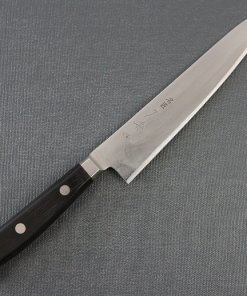
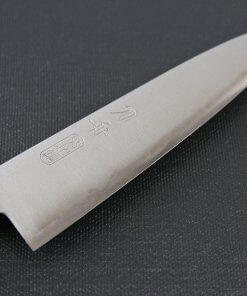



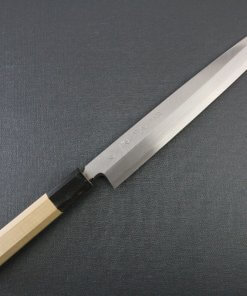
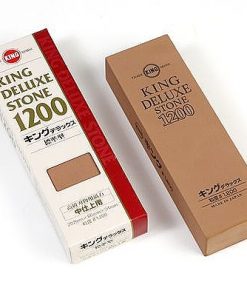
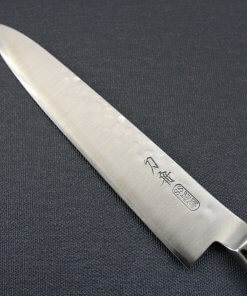
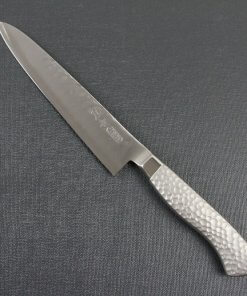
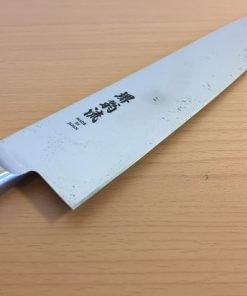
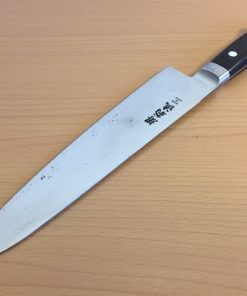
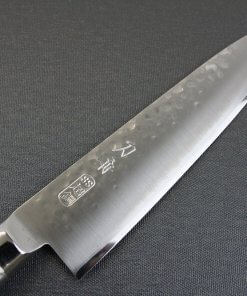
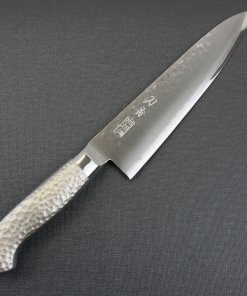
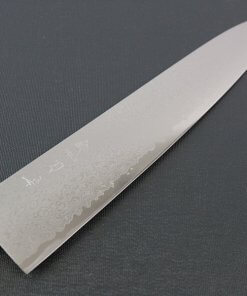
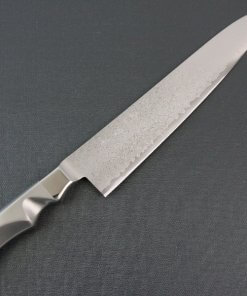
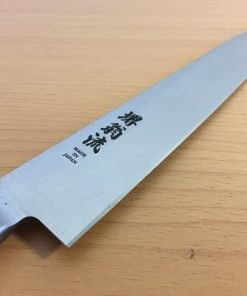
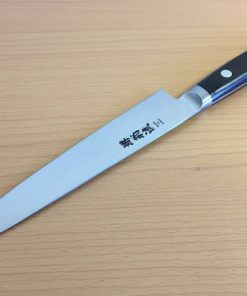
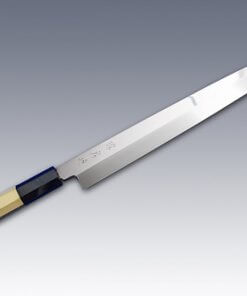
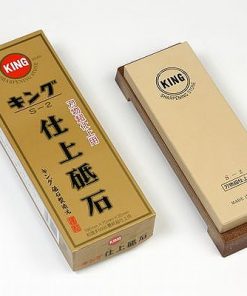
About Orientalsouls.com
Learn and Buy Japanese Craftsmanship, Tradition & Culture
OrientalSoul.com is the online shop where you can buy traditional crafts of Japan.
We only sell selected authentic products in which true spirits of Japanese craftsmanship exist.
You may be able to find similar products in other shops for lower prices. However, we sell products based on fair prices that worth labor and value of experienced craftsmen.
In addition, we introduce stories about product history, how a product is made, what makes it different from others, and how the product enriches your life!